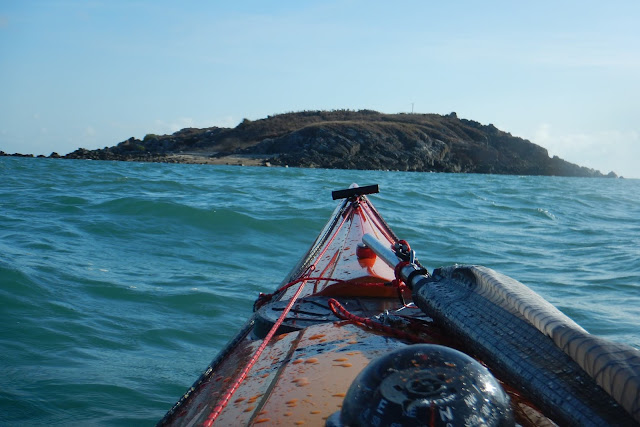Repeater Stations, Simplex and Duplex Channels
The basics of Australian VHF operation
Within the International VHF group, there are two operating systems: a simplex mode and a form of duplex mode.
Simplex mode
Simplex channels operate by using the same assigned frequency to transmit and receive. For example, Ch 16, the distress and primary calling channel on a VHF radio, transmits and receives on a frequency of 156.800 MHz. When you release the microphone transmit (Tx) button, the radio can accept an incoming Ch 16 call from another radio. So simplex mode is simply ‘out’ and ‘in’ from one radio aerial to another on simplex frequencies. Simplex signal communication is by line-of-sight and therefore has a limited range.
Duplex mode used by repeaters
A telephone uses a duplex system enabling you to talk and listen at the same time. In phones, the paired frequencies operate simultaneously, whereas the VHF duplex frequencies are paired but operate alternately. This is the reason for the protocol of saying “over” to advise the receiving station that they may now reply. This courtesy also applies to simplex operations.
There are 35 duplex-type channels in the International group. In Australian waters, recreational boaters are only concerned with five duplex channels. These are channels 21, 22, 80, 81 and 82. Duplex Ch 21 for instance, transmits on a frequency of 157.050 MHz and receives on a frequency of 161.650 MHz.
Stations established on land
Again, there are two types: those using the simplex system with radios identical to those in use on ships, including VMRs and marinas; and those which operate as repeaters using the duplex system and extending the range of the VHF beyond the line of sight. Often it is the misunderstanding about how repeaters work that causes transmission problems.
How does a repeater work?
Within the International VHF group, there are two operating systems: a simplex mode and a form of duplex mode.
Simplex mode
Simplex channels operate by using the same assigned frequency to transmit and receive. For example, Ch 16, the distress and primary calling channel on a VHF radio, transmits and receives on a frequency of 156.800 MHz. When you release the microphone transmit (Tx) button, the radio can accept an incoming Ch 16 call from another radio. So simplex mode is simply ‘out’ and ‘in’ from one radio aerial to another on simplex frequencies. Simplex signal communication is by line-of-sight and therefore has a limited range.
Duplex mode used by repeaters
A telephone uses a duplex system enabling you to talk and listen at the same time. In phones, the paired frequencies operate simultaneously, whereas the VHF duplex frequencies are paired but operate alternately. This is the reason for the protocol of saying “over” to advise the receiving station that they may now reply. This courtesy also applies to simplex operations.
There are 35 duplex-type channels in the International group. In Australian waters, recreational boaters are only concerned with five duplex channels. These are channels 21, 22, 80, 81 and 82. Duplex Ch 21 for instance, transmits on a frequency of 157.050 MHz and receives on a frequency of 161.650 MHz.
Stations established on land
Again, there are two types: those using the simplex system with radios identical to those in use on ships, including VMRs and marinas; and those which operate as repeaters using the duplex system and extending the range of the VHF beyond the line of sight. Often it is the misunderstanding about how repeaters work that causes transmission problems.
How does a repeater work?
To talk to someone you have to be able to see
them. To talk to someone you can’t see, you need someone in the middle
who can see you both.
To communicate with a radio that is too far away, you need something in the middle. This is the repeater. The repeater listens for the signal from your radio and re-broadcasts it simultaneously. Then every radio within range of the repeater can hear your signal.
How is the repeater able to listen to your signal while at the same time, re-broadcasting it?
Your radio transmits a signal on frequency A, for example on Ch 21 at 157.050 MHz, the frequency on which the repeater is listening and receiving. The repeater re-transmits the signal on frequency B (161.650 MHz) on which ship stations receive.
To communicate with a radio that is too far away, you need something in the middle. This is the repeater. The repeater listens for the signal from your radio and re-broadcasts it simultaneously. Then every radio within range of the repeater can hear your signal.
How is the repeater able to listen to your signal while at the same time, re-broadcasting it?
Your radio transmits a signal on frequency A, for example on Ch 21 at 157.050 MHz, the frequency on which the repeater is listening and receiving. The repeater re-transmits the signal on frequency B (161.650 MHz) on which ship stations receive.
So other radios listening on Ch 21 are not listening to your radio — they are listening to the repeater.
To clarify this: if your vessel and another ship station are alongside each other at a jetty and are using the repeater channels, the signal goes from your vessel to the repeater and back to the other vessel. It does not travel directly from aerial to aerial as in simplex mode.
Repeaters’ advantages
The repeater extends the distance of the transmitted signal beyond that of the simplex line-of-sight. VHF simplex line-of-sight range is typically around 20km (11nm) either ship to ship or ship to shore. Duplex transmission through repeaters can be 50km (27nm) ship to shore depending on the height of the repeater antenna.
Repeaters operate on one of five channel frequencies, channels 21, 22, 80, 81 and 82. These repeaters are sited around the Australian coast always in the vicinity of sea rescue organisations. They receive and transmit the signals simultaneously back and forth on the VHF duplex network.
Repeaters are installed on high ground to maximise their antennae height and therefore their signal carry capability. They are usually difficult to access because of the terrain and most rely on battery power charged by a solar array.
As a side issue, chat on VMR duplex channels may interrupt urgent signals and deplete repeater battery power. Where possible, on ship to ship communication, you should change to a simplex channel other than Ch 16, once contact is made via the repeater.
In remote areas of the Australian coast there are no repeaters, so calling on duplex channels will not be successful. Simplex line-of-sight channels must be used, with Ch 16 the obvious first choice as it is the primary calling channel and is automatically included in a VHF radio scan.
It must never be used for chit-chat.
Activating the repeater
When you press the transmit (Tx) button on the microphone, the outgoing signal ‘cracks’ the repeater to open from sleep mode and starts it.
The repeater opens for a predetermined period (about 30 seconds) and then closes down until reactivated by again pressing the Tx button.
If you begin to transmit a long message, with the button held down, or are required to pause to obtain onboard information for say, beyond 25 seconds, the repeater will close automatically and the tail of your message will not be received. The receiving station will hear an incomplete message.
To overcome this common problem, transmit for short periods of say, 10 to 15 second bursts, release the button and re-press the Tx button before continuing your message.
Identifying repeater availability
In unfamiliar territory, where you need to find whether a repeater is in the vicinity, you can follow this procedure:
• ensure your radio is set on international group (INT)
• adjust the squelch to the threshold setting
• increase volume to near maximum
• select each duplex channel in sequence, Channels 21 to 82
• press Tx button momentarily and release it
• listen intently for a brief noise or ‘tail’ of approximately one second
• if heard, then a repeater using that channel is in range
• if not heard, proceed to the next channel and repeat the procedure
• reduce volume to normal setting or wear ear protection! If no repeater is identified, call on Ch 16.
Hints to help your VHF operation
Most sea rescue organisations provide the simplex and repeater channels to be used in their locations on their websites or if you phone ahead. This information and details of port communications are essentials in your communications kit.
If you incorrectly use a channel dedicated for, say, commercial, fishing or VTS (vessel traffic systems), you will probably not receive a reply or, at best, a request to “use a recreational-assigned channel”.
It is appropriate to call on a port operations channel and request ship movements and/or request permission to enter or depart a port-controlled area.
Marina berth allocation
Marinas do not listen on repeater channels, so calls on these channels won’t be answered. Call on Ch 16 and transfer immediately to the marina’s operating channel. If you don’t get a response, you might call the VMR on its channel and request the marina calling channel or telephone number.
Be prepared to give your vessel details to the VMR for its radio log.
VMR opening and closing procedures
If you call a VMR at the advertised opening or closing time to log on or off, please understand that the procedures the operators have to follow mean there can be a delay of several minutes in acknowledging your call.
Signal interference causes
‘Over squelch’ will nullify a weak signal. Set your squelch control for the area of operation and check it regularly as conditions change.
Wind noise in a cockpit or open boat can override a voice. Mask the noise by placing a sock over the microphone.
Duplex channels via repeaters
Ch 21, Ch 22, Ch 80, Ch 81, Ch 82



Comments
Post a Comment